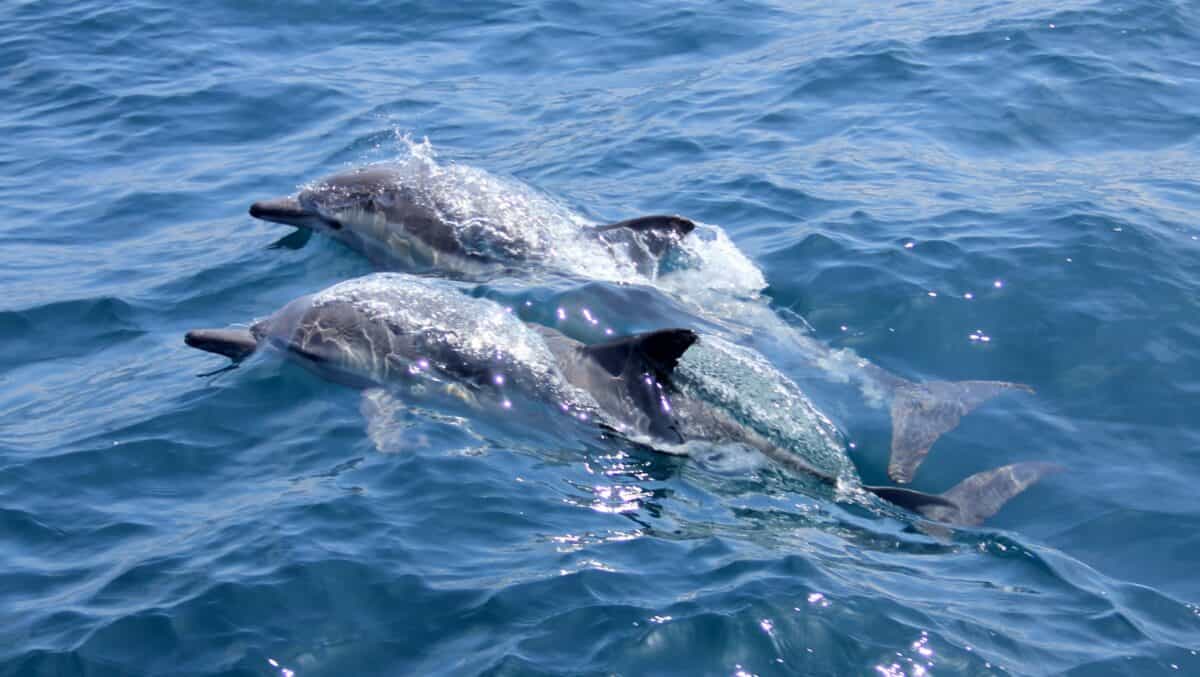Dolphins are renowned for their intelligence and sophisticated hunting techniques, with circular swimming being one of their most fascinating behaviors. When dolphins swim in circles before attacking prey, they’re engaging in a deliberate and strategic hunting method that has evolved over millions of years. This behavior, observed in multiple dolphin species including bottlenose dolphins, spinner dolphins, and common dolphins, serves several crucial purposes in their predatory arsenal.
Marine biologists studying this behavior have documented how dolphins use circular swimming patterns to effectively corral fish into tight groups called bait balls. By swimming around their prey in increasingly tighter circles, dolphins create a natural barrier that prevents fish from escaping. This methodical approach demonstrates dolphins’ understanding of prey behavior and their ability to manipulate it to their advantage. The precision with which they execute these circular maneuvers reflects their advanced cognitive abilities and cooperative hunting skills.
Creating the “Wall of Death”
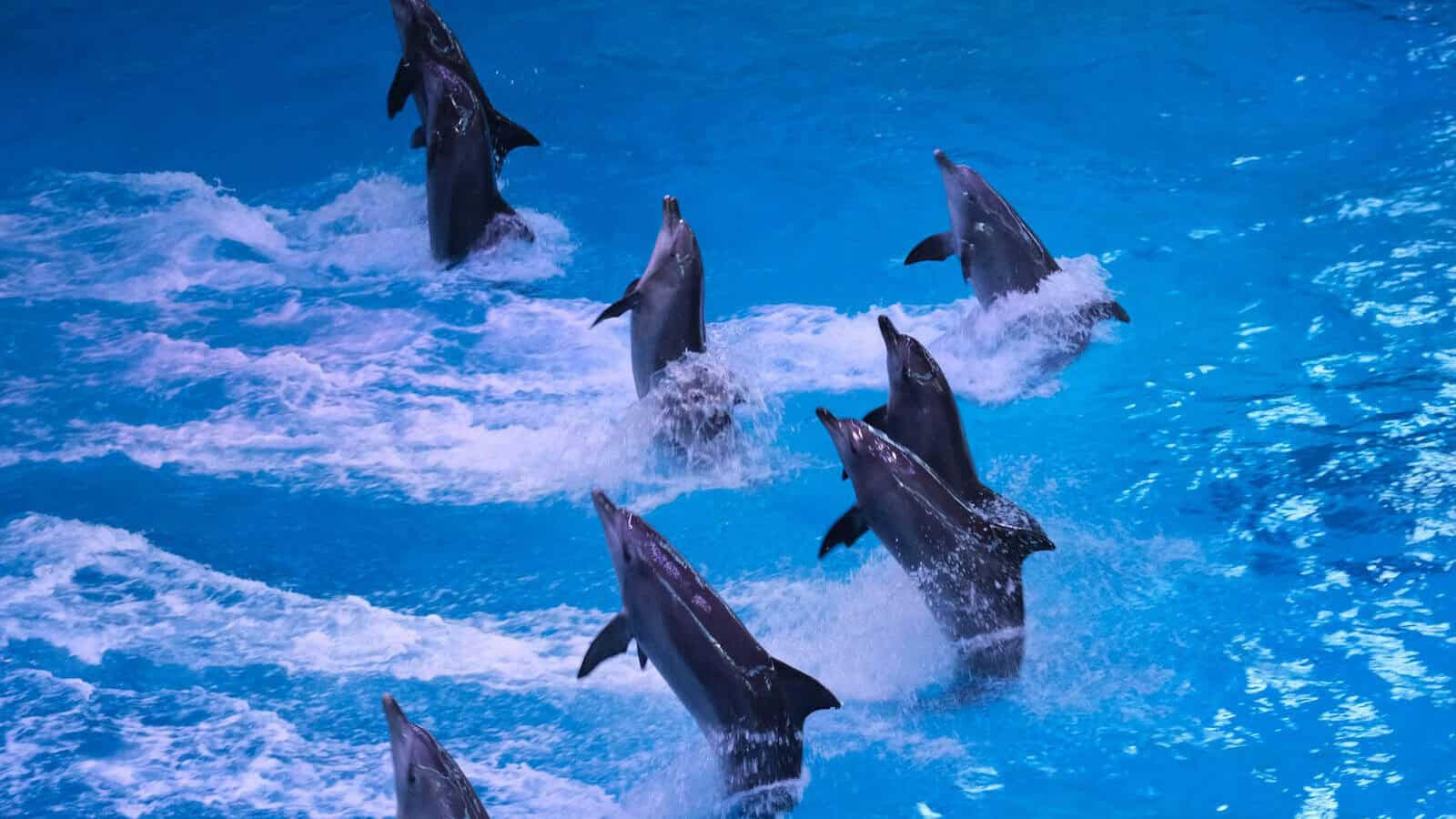
One of the most dramatic manifestations of circular swimming occurs when dolphins create what marine scientists refer to as a “wall of death.” During this hunting technique, a pod of dolphins will coordinate their movements to swim in a perfect circle around a school of fish. As they swim, they beat their tails forcefully, creating turbulence and bubbles that form a visible and physical barrier. This living wall effectively contains the prey fish, preventing their escape and concentrating them into a dense mass.
The wall of death technique is particularly effective because it exploits the natural schooling behavior of fish. When threatened, many fish species instinctively cluster together, which ironically makes them more vulnerable to coordinated dolphin attacks. The dolphins’ circular swimming creates a dynamic enclosure that becomes increasingly smaller, forcing the fish into a compact ball that’s easier to attack. This sophisticated strategy demonstrates how dolphins have evolved to use their intelligence and physical abilities in perfect harmony to maximize hunting efficiency.
The Role of Echolocation in Circular Hunting

Echolocation plays a crucial role in dolphins’ circular hunting patterns. As dolphins swim in circles around their prey, they continuously emit high-frequency sound waves that bounce off objects in their environment, including fish schools. These sound waves return to the dolphins as echoes, providing them with detailed information about the location, density, and movement of their prey. This real-time acoustic feedback allows dolphins to adjust their swimming patterns precisely, ensuring the fish remain contained within their circular formation.
Research using underwater acoustic monitoring has revealed that dolphins modify their echolocation patterns during circular hunting. They increase the frequency of their clicks as they tighten the circle, effectively creating an acoustic net that complements their physical encirclement strategy. This dual approach—combining physical movement with acoustic tracking—demonstrates the remarkable sophistication of dolphin hunting techniques. The integration of echolocation with circular swimming allows dolphins to hunt effectively even in murky waters where visibility is limited, giving them a significant advantage over their prey.
Cooperative Hunting and Social Coordination

Circular swimming before attacking prey often involves impressive levels of social coordination among dolphins. Pods ranging from just a few individuals to dozens of dolphins work together in these hunts, demonstrating remarkable synchronization. Studies of wild dolphins have shown that they often take on specialized roles during these circular hunts—some dolphins may drive fish toward the surface, while others maintain the perimeter of the circle, and still others position themselves to intercept any fish that attempt to escape.
This division of labor requires sophisticated communication and social learning. Young dolphins learn these complex hunting techniques by observing adults, gradually being incorporated into hunting groups as they master the necessary skills. Researchers have identified specific vocalizations that appear to coordinate these cooperative hunts, suggesting that dolphins have developed specialized acoustic signals for hunting contexts. The ability to organize complex, cooperative hunting strategies like circular swimming is considered one of the hallmarks of dolphin intelligence and social complexity.
Energy Conservation Through Strategic Circles
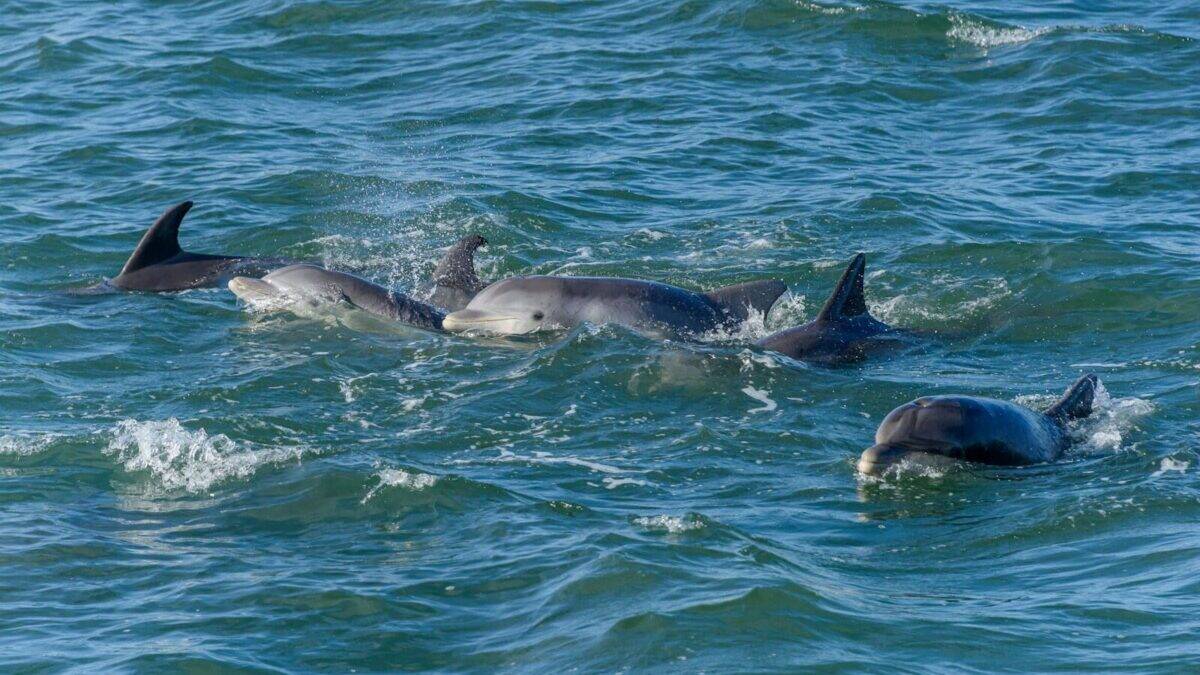
Circular swimming before attacking prey represents an energy-efficient hunting strategy for dolphins. By working together to herd fish into concentrated groups, dolphins dramatically increase their capture rate while minimizing the energy expended on chasing individual prey. The circular pattern creates a situation where multiple dolphins can feed on a dense concentration of fish, maximizing their caloric intake relative to their hunting effort.
Bioenergetic studies have demonstrated that cooperative circular hunting can yield up to five times more food energy than solitary hunting techniques. This efficiency becomes particularly important in oceanic environments where prey may be patchily distributed, requiring dolphins to optimize their foraging strategies. The coordinated nature of circular hunting also allows pod members to take turns feeding and maintaining the circle, providing rest periods that further conserve energy. This strategic approach to energy management through circular hunting patterns represents a sophisticated adaptation to the challenges of marine predation.
Regional Variations in Circular Hunting Techniques
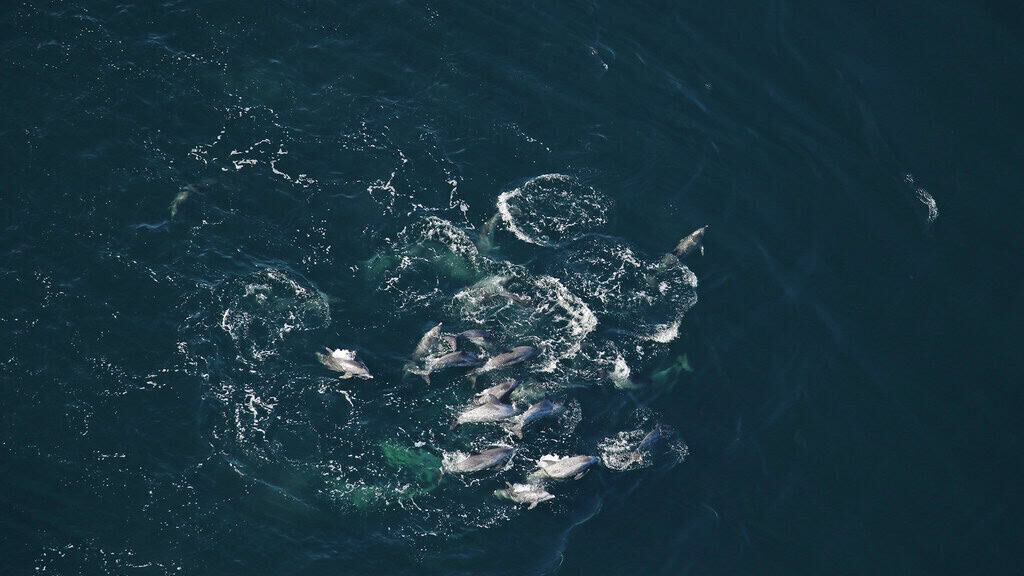
Fascinating regional variations exist in how different dolphin populations employ circular swimming techniques. In the shallow waters off Florida, bottlenose dolphins have been observed performing “mud ring feeding,” where they swim in circles while flapping their tails against muddy bottoms, creating a ring of suspended sediment that traps fish. In contrast, spinner dolphins in Hawaii use the topography of coral reefs to help form their circles, incorporating natural barriers into their hunting strategy.
In the waters of New Zealand, dusky dolphins have developed a variation where they herd fish toward the surface before swimming in tight circles around them, creating a “cylinder” rather than just a circle. Meanwhile, common dolphins in the Mediterranean often coordinate with seabirds, using circular swimming to drive fish toward the surface where birds and dolphins can both feed. These regional variations demonstrate how dolphin populations have adapted the basic circular hunting strategy to their specific environments, prey types, and ecological contexts—evidence of both cultural learning and adaptive intelligence.
The Bubble Net Variation
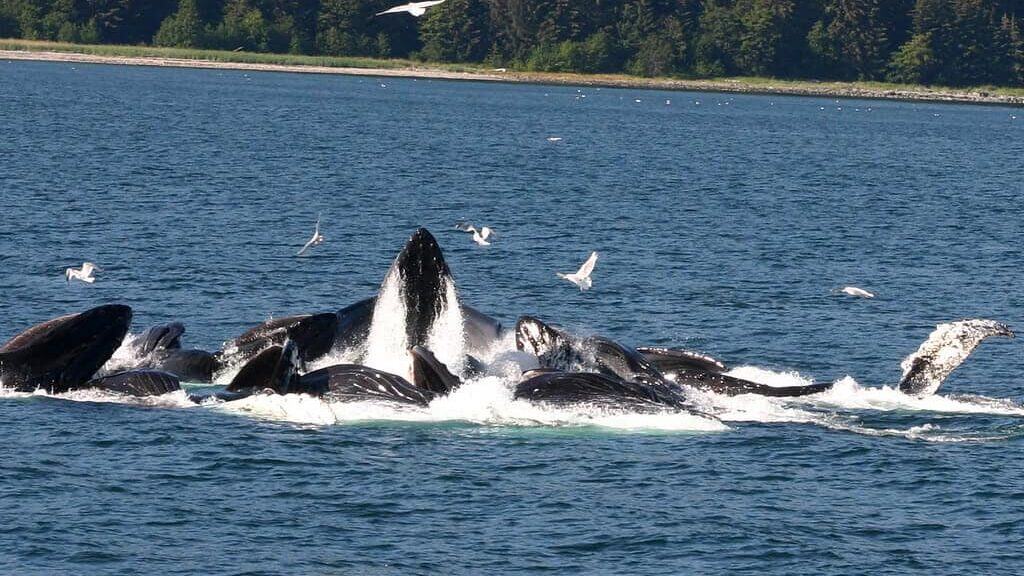
Some dolphin species have evolved a specialized version of circular swimming called “bubble net feeding.” During this hunting technique, dolphins swim in circles while releasing bubbles from their blowholes, creating a curtain or net of bubbles that surrounds fish schools. This bubble barrier serves multiple purposes: it visually and acoustically confuses the prey, acts as a physical barrier that fish are reluctant to cross, and concentrates the prey into a tighter space for more efficient feeding.
The bubble net technique requires precise breath control and timing, as dolphins must continue swimming in their circular pattern while releasing air at strategic intervals. Research using underwater cameras has revealed that the size and density of these bubble nets vary depending on the prey species and environmental conditions. While humpback whales are perhaps more famous for bubble net feeding, the dolphin version of this technique demonstrates convergent evolution of similar hunting strategies across different marine mammal species. The combination of circular swimming with bubble production represents one of the most sophisticated hunting behaviors observed in the animal kingdom.
Prey Response and Counter-Adaptations
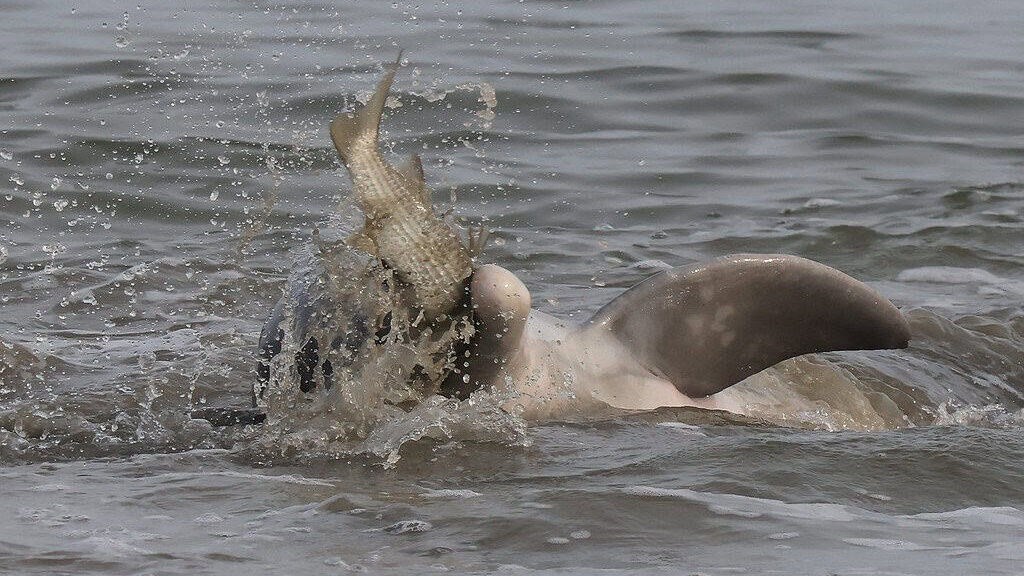
The effectiveness of dolphins’ circular swimming strategy has led to evolutionary counter-adaptations in their prey. Many fish species have developed responses to dolphin corralling behavior, including diving deeper, splitting into multiple smaller schools, or attempting to swim underneath the dolphins. Some fish, like mullet, have even evolved the ability to jump over the dolphin circle when trapped—a behavior that dolphins have subsequently adapted to by raising their bodies higher in the water during circular swimming.
This evolutionary arms race has resulted in increasingly sophisticated circular hunting techniques among dolphins. For example, some dolphin pods have been observed using “sentinel” dolphins that patrol above the circle to intercept jumping fish, while others have developed techniques for herding fish against natural barriers like shorelines where escape is impossible. The dynamic interplay between dolphin hunting strategies and fish escape tactics demonstrates the ongoing evolutionary pressure that shapes marine predator-prey relationships. This ecological relationship has likely contributed to the remarkable intelligence and behavioral flexibility for which dolphins are known.
Circular Swimming as a Teaching Tool
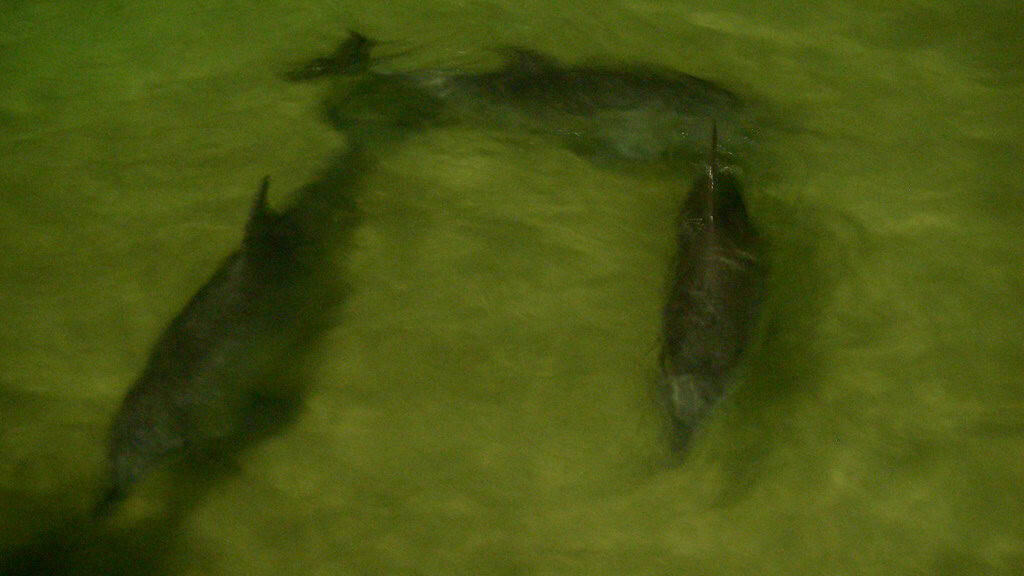
Circular hunting provides an important context for learning and cultural transmission within dolphin societies. Adult dolphins actively teach younger pod members how to participate in circular hunts, gradually introducing them to more complex roles as they develop. Researchers have observed adults deliberately slowing and simplifying circular hunting patterns when juveniles are present, suggesting an intentional pedagogical approach to transmitting these crucial survival skills.
Long-term studies of dolphin populations indicate that specific circular hunting techniques can become cultural traditions within certain pods, passed down through generations and creating unique “hunting cultures.” For example, some pods are known for specialized variations of circular hunting that involve particular vocalizations or specialized roles that aren’t seen in other populations. The teaching of circular hunting techniques represents a form of non-genetic inheritance, where vital survival information is culturally transmitted through observation, practice, and direct instruction. This cultural learning system helps maintain the remarkable diversity of hunting strategies observed across different dolphin populations worldwide.
Environmental Impacts on Circular Hunting

Environmental factors significantly influence how and when dolphins employ circular swimming hunting techniques. In clearer waters, dolphins tend to form larger, more expansive circles, while in turbid conditions, they create tighter formations that rely more heavily on echolocation. Seasonal changes in prey distribution also affect circular hunting—during times of prey abundance, dolphins may form multiple hunting circles simultaneously, while in scarcer periods, they concentrate their efforts into fewer, more coordinated circles.
Human activities have begun to impact these natural hunting patterns. Noise pollution from boats can disrupt the acoustic communication necessary for coordinating circular hunts, while fishing activities may alter the natural distribution of prey fish. Conservation efforts increasingly focus on protecting areas where dolphins regularly engage in circular hunting, recognizing these as critical feeding habitats. Climate change represents another threat, as shifting ocean temperatures alter prey distribution patterns, potentially forcing dolphins to adapt their circular hunting techniques to track changing prey populations or switch to different hunting strategies altogether.
Scientific Research Methods for Studying Circular Swimming
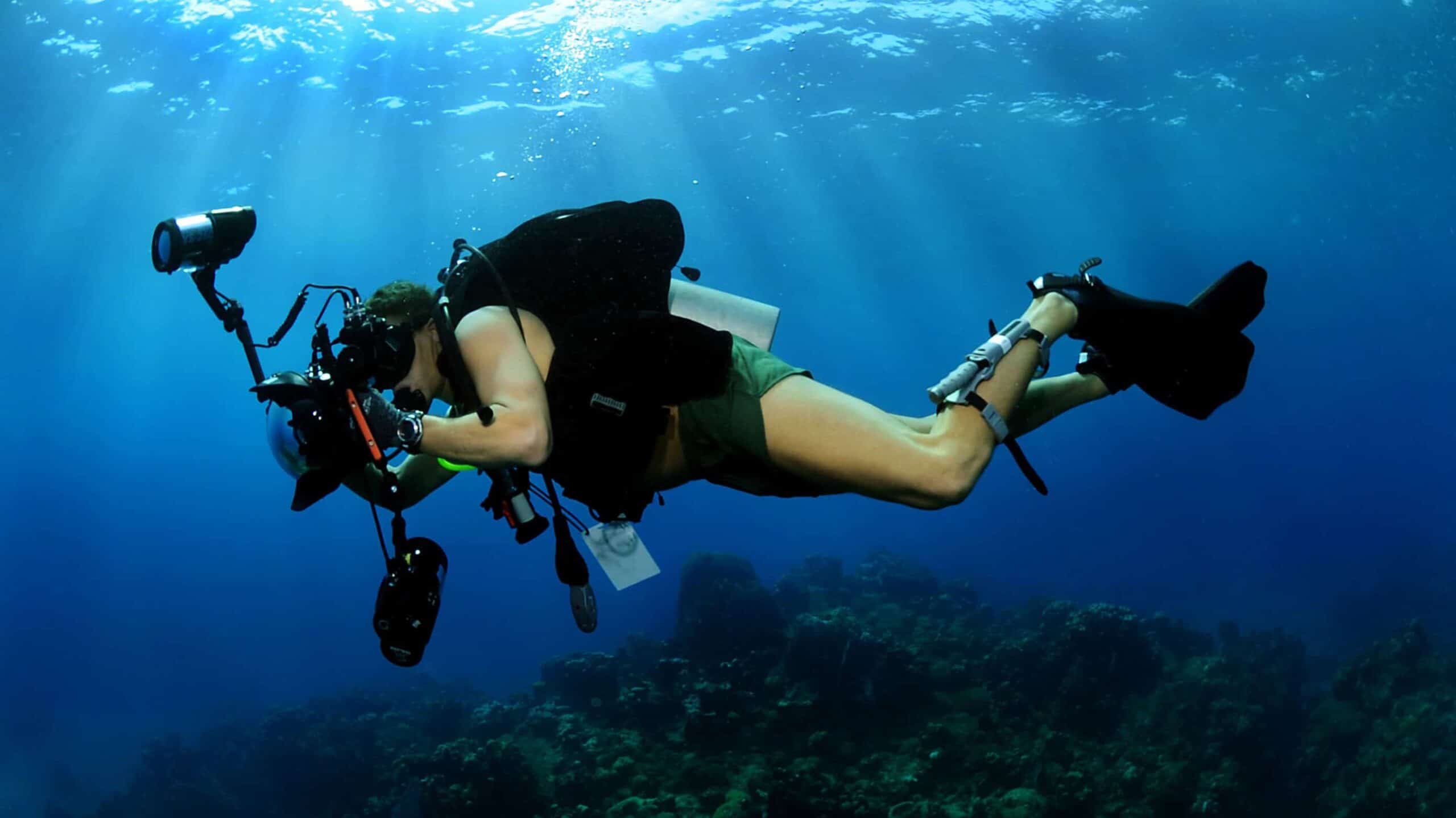
Studying dolphins’ circular swimming behavior presents unique challenges that have driven innovation in marine research techniques. Traditional boat-based observations provide limited perspectives, so scientists have developed more sophisticated approaches including drone-based aerial monitoring, underwater camera arrays, and acoustic recording devices. These technologies allow researchers to document the three-dimensional nature of circular swimming patterns and correlate them with acoustic communications between pod members.
Tagging technology has revolutionized our understanding of circular hunting dynamics. Accelerometers attached to dolphins record fine-scale movements during circular swimming, while simultaneous prey-tracking methods help scientists understand how fish respond to these hunting techniques. Computer modeling has also become an important tool, allowing researchers to simulate different circular swimming patterns and predict their effectiveness under various conditions. The combination of these research approaches has dramatically expanded our understanding of the complex dynamics involved in dolphins’ circular hunting behavior, revealing it to be even more sophisticated than previously recognized.
Understanding the Evolutionary Significance of Circular Hunting

The circular swimming hunting strategy represents a fascinating example of evolutionary adaptation in marine predators. This behavior likely evolved over millions of years as dolphins developed increasingly sophisticated ways to capture schools of fish—one of the most abundant but challenging prey resources in marine environments. The cognitive abilities required for circular hunting, including spatial awareness, cooperative action, and predictive thinking, have likely both driven and been shaped by the evolution of the remarkably large and complex dolphin brain.
Comparative studies with other marine mammals suggest that circular hunting may have evolved independently in different cetacean lineages, representing convergent evolution toward similar solutions for the challenge of capturing schooling fish. The presence of similar techniques in distantly related dolphin species around the world suggests that circular hunting confers significant survival advantages. From an evolutionary perspective, the development of circular swimming as a hunting strategy represents a beautiful example of how natural selection can shape complex behavioral adaptations that incorporate social cooperation, physical abilities, and cognitive skills into an integrated and highly effective predatory technique.
Dolphins’ circular swimming before attacking prey represents one of the most sophisticated hunting behaviors in the animal kingdom, combining physical prowess, social coordination, acoustic technology, and strategic thinking. This behavior demonstrates not only the remarkable intelligence of dolphins but also their capacity for cultural learning and adaptation to specific environmental conditions. The various modifications of circular hunting observed across different dolphin populations highlight the behavioral flexibility that has made these marine mammals such successful predators in diverse oceanic habitats worldwide.
As we continue to study these circular hunting techniques, we gain valuable insights into dolphin cognition, social structures, and ecological adaptations. These insights not only deepen our appreciation for these remarkable marine mammals but also inform conservation efforts aimed at protecting the environments where these behaviors occur. Understanding why and how dolphins swim in circles before attacking prey opens a window into the complex underwater world of these sophisticated hunters, revealing hunting strategies that have been refined through millions of years of evolution and cultural transmission. The circular hunt stands as a testament to the extraordinary adaptations that have evolved in marine predators—a perfect synthesis of brain power, social cooperation, and physical ability.
- Wildlife Encounters You Might Have on a Spring Hike - August 23, 2025
- Wildlife That Thrives in the Carolinas Year-Round - August 23, 2025
- The Role of Bears in Keeping Forests Healthy - August 23, 2025

